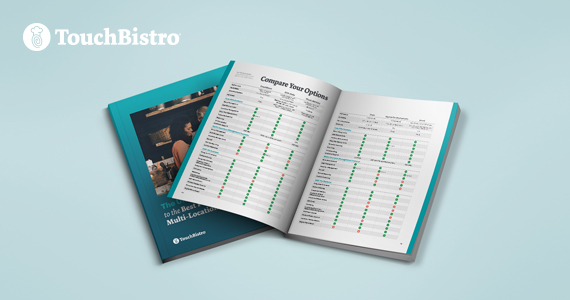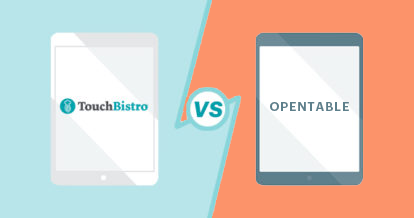Are you ready for your next chapter as a restaurateur? You’re a pro when it comes to running your restaurant and whipping up culinary delights, but maybe it’s time to explore a new avenue of business. Learning how to franchise a restaurant could be the next right move for you.
With more than 750,000 franchise organizations in America, the concept has been tested and proven. In fact, it dates back to 1851 when the first franchise was launched – a brand you’ve likely heard of, SINGER® sewing machines. Restaurants hopped aboard the franchise train, too, and today over 80% of restaurants worldwide are franchise-based.
In this guide to owning a restaurant franchise, we’ll cover:
- What is a franchise restaurant?
- Purchasing a franchise vs. franchising your current restaurant
- How to franchise a restaurant (as a franchisor) in 8 steps
Feeling ready to build your franchise empire? Let’s dive in!
What is a Franchise Restaurant?
A franchise restaurant is a turnkey restaurant concept with an existing brand. Under this particular business model, you purchase an existing venue rather than starting your own restaurant from scratch. You can even purchase a multi-unit restaurant concept with venues in different locations if you like, as availability allows.
Here’s a basic overview of how owning a restaurant franchise works with the two primary parties involved:
- The franchisor creates the brand and establishes the systems to run the business.
- The franchisee buys into the franchise by paying royalty fees so they can operate using the brand name and business system of the franchisor (including recipes). The franchisee also often pays an upfront fee to get started.
In addition, “The franchisee generally receives site selection and development support, operating manuals, training, brand standards, quality control, a marketing strategy, and business advisory support from the franchisor,” according to the International Franchise Association.
Can you hear the smooth sound of that key turning?!

Use this fillable template to help seal the deal on your restaurant partnerships.
Restaurant Franchise Examples
Wondering what a franchise restaurant looks like? There’s a good chance you drove past a franchise restaurant the last time you were on the road. A few common examples include:
- McDonald’s: The self-proclaimed “most recognized franchise business in the world,” you can franchise your very own McDonald’s restaurant for a cool $700,000 (minimum). In return, you’ll get the behemoth brand’s irresistible recipe for success.
- Pizza Hut: With 60 years of experience under its belt and 2,000+ franchisees around the globe, franchising a Pizza Hut is a popular option among restaurateurs, employing over 150,000 people in the U.S. alone.
- Tim Hortons: The largest quick-service restaurant in Canada is now growing quickly in America, targeting markets in California, Texas, Illinois, and California.

Franchising Your Current Restaurant vs. Buying a Restaurant Franchise
Now that we’ve covered a basic definition of franchising, let’s explore your options for starting a franchise restaurant. Spoiler alert: purchasing an existing franchise isn’t the only card you can play in this high-stakes game. Instead, you can go all-in and turn your current restaurant into a franchise business.
Franchisor vs. Franchisee: Which One Should You Choose?
Becoming a franchisor means you’ll be expanding your restaurant to multiple locations as well as growing your brand, while giving other restaurateurs the right to operate under that brand name in exchange for royalty fees. This includes allowing them to use your recipes and business processes to help ensure their success.
In contrast, becoming a franchisee (i.e., investing in an established restaurant like McDonald’s) means all the foundational work of creating and launching a business and brand is done for you. You simply need to learn how to open a restaurant franchise, and you get the support of an existing brand to build your business upon.
So, how do you decide which option is best for you?
If you’re new to the restaurant industry, purchasing a franchise might make the most sense. This way, you can hit the ground running with a playbook of battle-tested business processes and recipes you already know your guests will love.
On the other hand, if you’re already running a successful, profitable business and you want to explore restaurant expansion, franchising could be a great option. You can’t clone yourself to get more done (ever the business owner’s dilemma!), but you can learn how to start a franchise restaurant so you can standardize your business model and hand the reins to someone else. Plus, restaurant franchise management software can help manage operations across all locations.

How to Franchise a Restaurant in 8 Steps
If you’ve decided to franchise your restaurant as a franchisor (rather than buy into another business as a franchisee), your next move is to learn everything you can about how to franchise a restaurant. Let’s walk through 8 crucial steps.
1. Assess Your Current Restaurant Business
Hold your horses! The first step of your research on how to start a franchise restaurant should be to pause and evaluate your current business. This will help you figure out whether your existing restaurant concept can be scaled.
When considering the potential for scalability, ask yourself these questions:
- Is my existing restaurant profitable?
- Would the concept work in multiple locations?
- Can I standardize my processes with relative ease?
It’s essential to be sure that your current business is running well, that your finances are sound, and that franchising is the right choice for you before moving forward, or perhaps opening a second restaurant location is the right move for you instead.

Use this fillable template to help seal the deal on your restaurant partnerships.
2. Create Your Franchise Disclosure Document
If you’ve given yourself the green light to launch a franchise, your next step is to do the legal work. A franchise disclosure document (FDD) is a document that you as the franchisor must issue and disclose to potential franchisees before you can sell your restaurant as a franchise.
The FDD includes 23 items for disclosure that provide information about the franchise opportunity, estimated start-up costs, your management team, legal obligations, and more. It must also contain your audited financial statements.
It’s recommended that you hire a lawyer to review your FDD and help you issue it, as well as register it within the franchise registration states (those with additional franchise laws).
3. Establish Standard Processes
Assuming your restaurant concept is replicable, it’s time to create robust and efficient processes to maintain consistency and profitability across your future restaurant empire. Enter the franchise operations manual.
Think of this operations manual like your restaurant bible. It’s the go-to guide for everything a franchisee will need to know about running their restaurant. The manual should include information on your brand, various business milestones, staff training, the systems and technology you use, marketing, and more.
Don’t forget to include a legal notice at the beginning of your operations manual stating that the contents are confidential!
4. Protect Your Intellectual Property
Part of understanding how to open a restaurant franchise in a way that will set you up for success is ensuring your brand will be protected.
When you franchise your restaurant, you give other restaurateurs (your franchisees) the right to use your brand’s logo and trademark. So, be sure to register your logo and acquire a trademark through the U.S. Patent and Trademark Office. This will provide you with nationwide rights to use your trademark, distinguishing your restaurant from competitors.
5. Set Up Your New Franchise Company
Even if your existing restaurant is a corporate entity (which it likely is), you’ll need to set up a new franchise company. This will enable you to keep your future franchises separate from your current restaurant operations.
6. Evaluate Franchising Costs and Create a Budget
You probably tallied up your start-up costs and created a budget and investment plan when you first launched your restaurant. Now, it’s time to do it all over again! The good news? This time around, you’ll have more experience to lean on.
Remember to consider your existing restaurant’s current cash flow as you project the financials for your future locations. Try to estimate the growth your brand will likely experience as a result of expanding into new markets. Your goal is to plan for a profitable franchise system.

Use this fillable template to help seal the deal on your restaurant partnerships.
7. Prepare a Brand Profile
Branding and marketing are critical components of a successful restaurant, whether it’s an independent venue or a franchise empire. Your objective should be to ensure your brand remains consistent and recognizable to customers as you open each new franchise.
Start by creating a brand profile that all of your franchisees can use as they market their specific locations. This should include a brand vision statement, restaurant mission statement, and details on your products, such as menu items and any merchandise you sell. Be sure your franchisees understand the connection between this profile and the marketing strategy outlined in your operations manual – i.e., the fact that all of your marketing should be “on brand.”
8. Provide Startup Support
Once you’ve done all of the back-end work to become a franchisor, your next task is to provide the necessary support to help your franchisees get their restaurants up and running. This can include assisting with hiring and training staff, providing marketing and advertising materials, and advising on systems and technology like restaurant POS software – specifically a multi-location POS that can support numerous venues.
When it comes to your tech, every system should communicate with the rest. Each solution should connect across all of your restaurant properties. This is why, after franchising your restaurant, it’s a wise move to opt for enterprise-scale tech solutions, since these platforms are built to support chain and franchise restaurants.

Compare the top 6 multi-location POS softwares on features, pricing, payments, and more.
We’ve now covered 8 steps to starting a franchise restaurant. You’ve got all the information you need to feel confident about how to franchise a restaurant and expand your brand. We can’t wait to see how this next chapter unfolds for you!
Download our free inventory template
Sign up for our free weekly TouchBistro Newsletter







